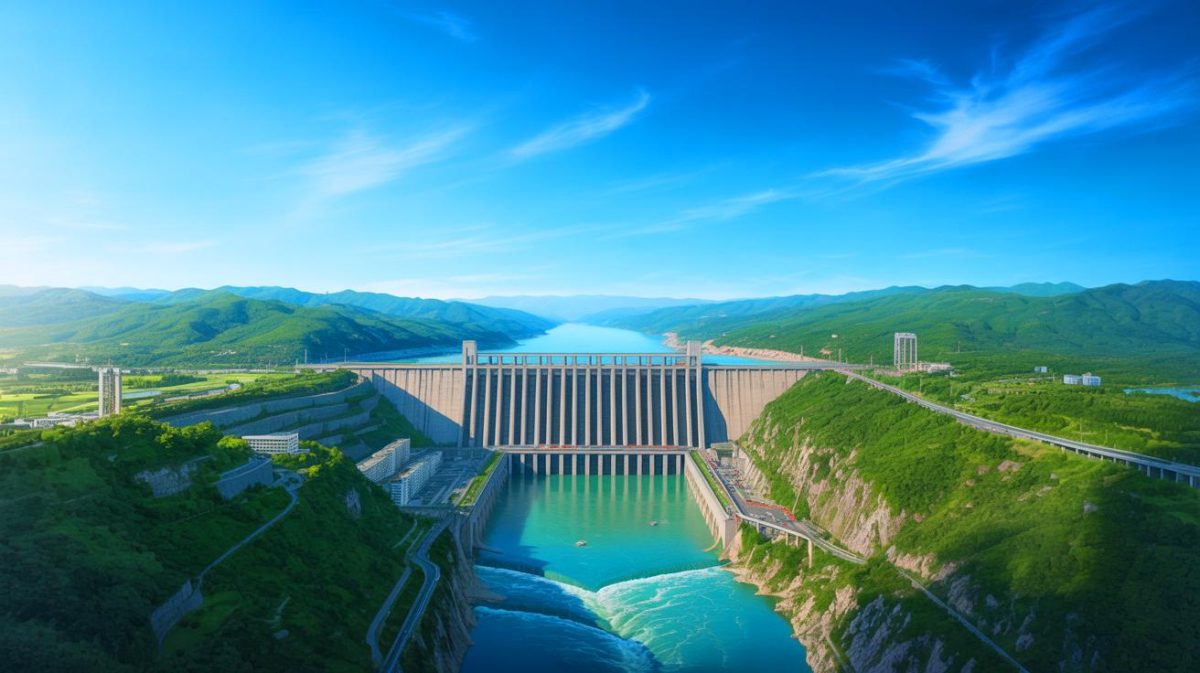| IN A NUTSHELL |
|
In recent decades, the world has witnessed remarkable feats of engineering that have transformed landscapes and redefined what is possible. Among these achievements, the Three Gorges Dam in China stands out not only for its size but for its potential global implications. As the largest hydroelectric dam on the planet, it represents the pinnacle of human ingenuity and ambition. However, recent insights from NASA suggest that such monumental constructions may have unintended effects on Earth’s natural systems, including the rotation of the planet. This article explores the broader implications of such projects and the delicate balance between human progress and environmental impact.
Monumental Structures and Their Environmental Impact
The construction of colossal infrastructures has become a hallmark of modern civilization, symbolizing progress and technological prowess. From the towering heights of the Burj Khalifa to the sprawling expanse of the Three Gorges Dam, these structures demonstrate our ability to harness and manipulate natural resources. However, such advancements come with potential environmental repercussions. The Three Gorges Dam, for instance, is not just a marvel of engineering; it is a symbol of China’s ambition to control its natural resources and address energy needs.
While its primary purpose is to generate electricity, the dam’s size and scale have sparked discussions about its potential to impact the Earth’s rotation. NASA’s research suggests that the redistribution of water masses in the dam’s reservoir could lead to significant shifts in the planet’s natural balance. Such insights underscore the importance of understanding the broader environmental consequences of human-made structures.
The Three Gorges Dam’s Global Implications
As a leader in renewable energy, China has invested heavily in hydroelectric power, with the Three Gorges Dam serving as a key component of its strategy. Despite its massive scale, the dam only fulfills 3% of China’s energy requirements. However, its true significance lies in its potential environmental impact. According to NASA, the dam’s vast reservoir could influence Earth’s rotation, akin to events like earthquakes that involve substantial mass displacement.
Dr. Benjamin Fong Chao of NASA’s Goddard Space Flight Center highlights the potential for even small actions to influence our planet. The Three Gorges Dam, with its immense water capacity, exemplifies how human endeavors can inadvertently alter the Earth’s dynamics. Such findings prompt a reevaluation of the implications of large-scale engineering projects and the need for comprehensive environmental assessments.
The 0.06 Microsecond Shift
The potential impact of the Three Gorges Dam can be likened to an ice skater adjusting their spin by extending their arms. When filled to capacity, the dam’s reservoir holds approximately 10.6 trillion gallons (40 cubic kilometers) of water. This massive redistribution of water can lengthen the day by 0.06 microseconds and slightly modify Earth’s shape, making it more rounded at the equator and flatter at the poles.
Though these changes may appear insignificant, they highlight the intricate balance of the planet’s systems. The cumulative effect of various human activities could have far-reaching implications for Earth’s rotation and stability. As we continue to exploit natural resources at an unprecedented scale, it becomes increasingly essential to understand these dynamics and their potential impact on global ecosystems.
Balancing Progress and Environmental Stewardship
The ongoing construction of massive infrastructures raises critical questions about the long-term effects on our environment. How will these changes impact our daily lives and the planet’s natural stability? Structures like the Three Gorges Dam serve as reminders of the profound influence humans wield over Earth’s natural systems. As we advance technologically, it is crucial to consider the responsibilities that accompany such power.
Looking ahead, the challenge lies in finding a balance between the pursuit of progress and the need to preserve the Earth’s stability. How can we ensure that our engineering advancements do not compromise the planet’s future? This ongoing dialogue will be pivotal in shaping the future of sustainable development and environmental conservation.
As we continue to push the boundaries of what is possible, we must ask ourselves: how can we responsibly harness our technological capabilities while safeguarding the Earth’s natural systems for future generations?
Did you like it? 4.4/5 (28)








Wow, si cela est vrai, cela pourrait changer notre compréhension de l’impact humain sur la planète ! 🌍
J’aimerais voir les preuves scientifiques derrière ces affirmations. NASA, montrez-nous les données !
China is literally slowing down time. What a power move! 😅
Peut-on vraiment accuser un barrage de ralentir la rotation de la Terre ? Ça me paraît un peu tiré par les cheveux.
Les conséquences environnementales de nos constructions sont souvent sous-estimées. Merci pour cet article informatif.
N’importe quoi ! Je ne crois pas que ce soit possible. 😒